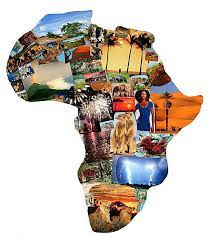Safeguarding the Tapestry of African Languages: A Comprehensive Strategy for Linguistic Preservation and Revitalization
Africa's linguistic landscape constitutes a significant component of its vibrant cultural heritage. The continent's thousands of languages represent a rich repository of history, tradition, and identity, each carrying unique narratives and knowledge passed down through generations. However, many face endangerment, demanding urgent preservation and revitalization efforts. This article proposes a comprehensive strategy grounded in relevant linguistic theories and models to ensure the long-term sustainability of African languages.
Theoretical Framework: Language Endangerment and Revitalization
This strategy draws upon several key concepts. Language endangerment, as defined by UNESCO, refers to the process by which a language loses its speakers, ultimately leading to its extinction. Language revitalization, conversely, involves active efforts to increase the number of speakers and domains of use for an endangered language. This strategy employs the principles of community-based language planning, recognizing the crucial role of local communities in language preservation. Furthermore, it incorporates aspects of the ecology of language, which views language as an interconnected system influenced by social, economic, and political factors. Finally, the framework utilizes the concept of cultural capital, emphasizing the value of linguistic diversity as a resource for individual and societal development.
Prioritizing Linguistic Diversity: A Foundation for Sustainable Development
Africa's linguistic diversity is a critical asset. Promoting indigenous languages in daily life is paramount. This requires a societal shift towards actively celebrating and integrating these languages into all societal spheres, effectively countering language shift and promoting language maintenance through application of the principles of language policy and planning. This includes enacting legislation promoting multilingualism and integrating local languages into governmental and media communications. This approach can be viewed through the lens of glocalization, adapting global best practices to local contexts.
Education: A Cornerstone for Intergenerational Language Transmission
Integrating indigenous languages into education is crucial for intergenerational language transmission. Bilingual or multilingual education, where local languages are used alongside international languages, promotes cognitive development and strengthens cultural identity. This aligns with the principles of additive bilingualism, where learning a second language does not come at the expense of the first. Successful implementation requires teacher training programs focusing on multilingual pedagogy and the development of culturally appropriate educational materials. This is informed by sociolinguistics, emphasizing the social context of language learning.
Investing in Comprehensive Language Revitalization Programs
Governments, organizations, and communities must invest in comprehensive language revitalization programs. This includes structured language classes for all age groups, cultural events showcasing linguistic richness, and the development of high-quality digital resources like online dictionaries and language learning apps, leveraging technological advancements for language documentation and accessibility. This follows principles of language documentation and the effective application of corpus linguistics and computational linguistics.
Leveraging Technology and Media for Enhanced Language Visibility
Technology plays a crucial role in modern language revitalization. Developing user-friendly digital platforms, interactive language learning applications, and online resources can significantly enhance language learning and dissemination. Integrating African languages into existing technologies and creating new technologies tailored to these languages is vital. Furthermore, promoting the use of African languages in media expands their reach and visibility, enhancing cultural pride and reinforcing identity.
Fostering Community Engagement and Cross-Border Collaboration
Community participation is paramount. Language festivals, workshops, storytelling competitions, and cultural exchanges foster a sense of collective ownership and pride, promoting active involvement in preservation efforts. Cross-border collaboration, sharing successful strategies and best practices among neighboring countries facing similar challenges, strengthens collective impact. This aligns with the concept of networked language planning, highlighting the importance of cooperation and resource sharing.
Preserving Cultural Memory: Oral Traditions and Place Names
Systematic efforts to document and archive oral traditions—stories, poetry, proverbs, and songs—are essential. Modern technologies facilitate the preservation and accessibility of these invaluable cultural assets. Simultaneously, preserving indigenous place names protects cultural memory and identity, reflecting a commitment to heritage preservation.
Conclusion and Recommendations
The preservation of African languages is a collective responsibility demanding sustained commitment. Implementing the strategies outlined above—grounded in linguistic theory and best practices—will safeguard Africa's rich linguistic heritage. This requires substantial investment in education, technology, and community-based initiatives, alongside policy changes promoting multilingualism. Further research should focus on evaluating the effectiveness of different revitalization strategies in diverse African contexts, investigating the impact of technology on language shift, and developing culturally appropriate language assessment tools. The long-term impact will be a more vibrant, inclusive, and culturally rich Africa, fostering societal cohesion and preserving invaluable linguistic diversity.
Reader Pool: What are the most significant barriers to effective language preservation in the African context, and how might these be overcome through collaborative efforts?






